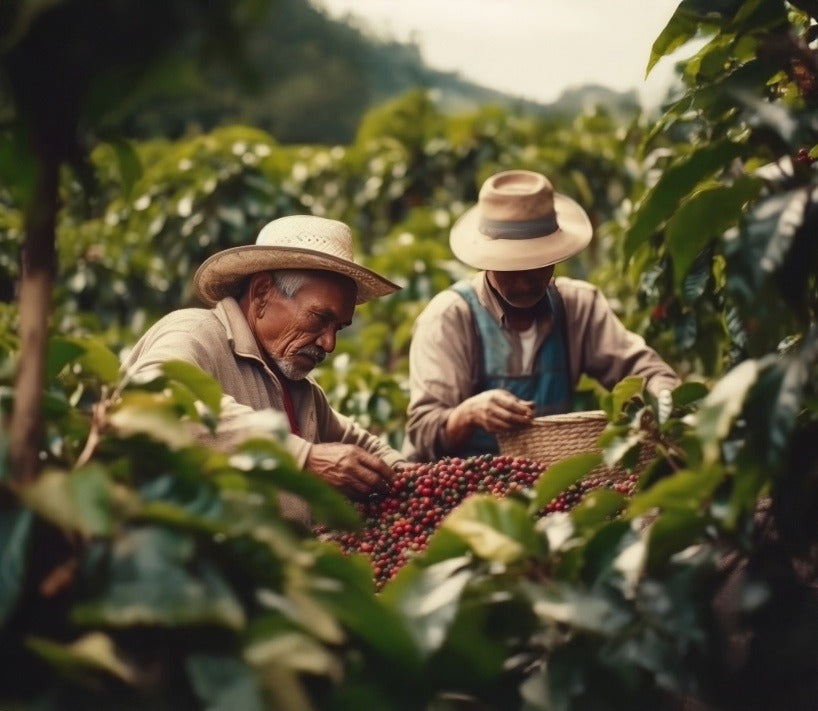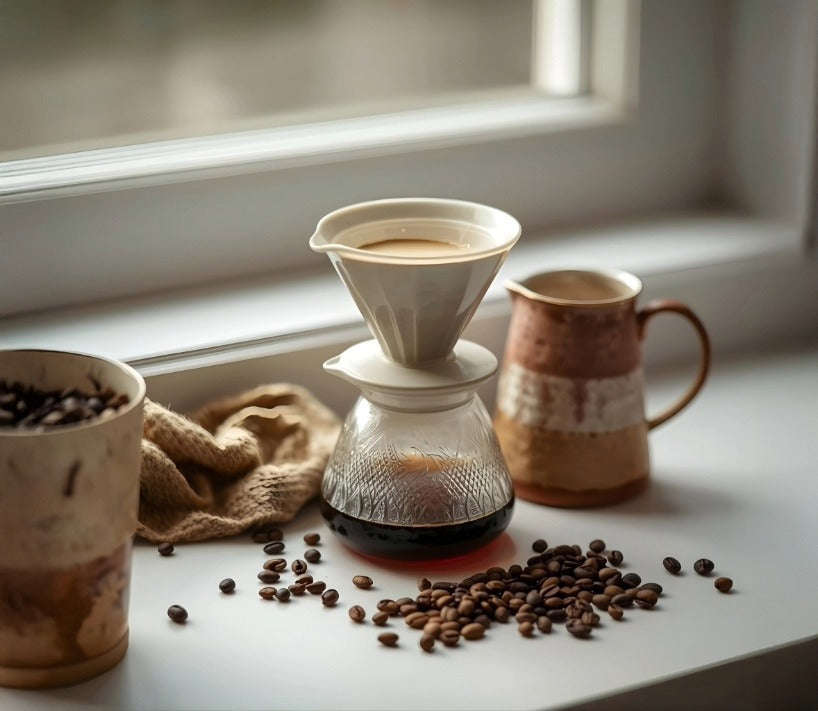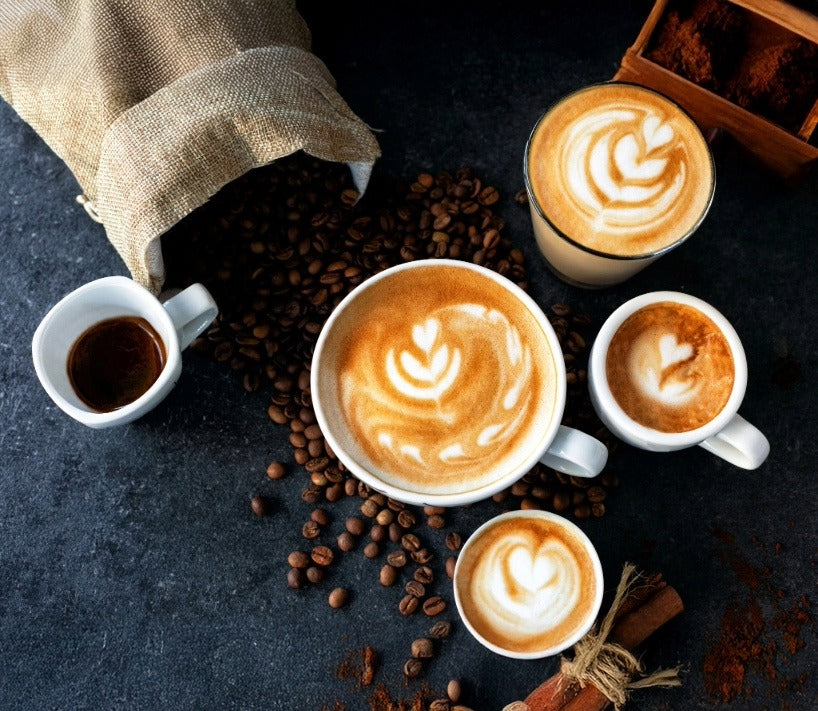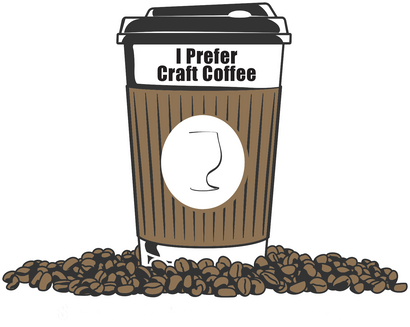Filter It Or Forget It: Best Small Batch Coffee
May 06, 2025 4 min read
Filter It or Forget It: Why Paper Filters Are the Unsung Heroes of Drip Coffee Flavor
Wait…why does my ‘fresh’ coffee taste like yesterday’s socks?
I used to think my trusty countertop drip brewer was fault‑proof. Grind the best tasting whole bean coffee, dump it into the gold‑tone mesh basket that came with the machine, press “brew,” and—voilà—perfect mornings! Or so I believed…until one day my mug betrayed me with a funky, bitter twang that no amount of creamer could hide.
Sound familiar? If you’ve ever wondered why your “best craft coffee at home” sometimes tastes oddly stale—even when you splurged on the best small batch coffee or top coffee delivered straight from your favorite roaster—there’s a good chance the culprit isn’t the beans at all. It’s the reusable basket filter quietly hoarding weeks (or months!) of old coffee oils and microscopic sediment.
Today I’m pulling back the lid (literally) to explain why slipping a simple white or brown paper filter into that basket will rescue your brew and your taste buds—as well as keep your investment in the best coffee online from going to waste.
The Unfiltered Truth About Reusable Baskets
1. Coffee Oil 101: The Good, the Aromatic… and the Spoiled
Fresh‑roasted beans burst with fragrant oils we all adore—those nutty, chocolaty, and citrusy notes that make you google best espresso beans at midnight. But once these oils meet air and heat, they oxidize quickly into compounds that taste like burned popcorn. Your reusable basket’s fine metal mesh (or plastic lattice) traps a thin film of those oils after every brew. Even if you rinse, scrub, and sing “Happy Birthday” twice while washing, a residue remains. After a dozen cycles, that residue forms a rancid crust that re‑dissolves into your good coffee to drink black—leaving you with something that tastes more like sadness than single‑origin Colombia.
2. Invisible Sediment = Visible Bitterness
Paper filters act like bouncers at a specialty coffee club, blocking microscopic grinds that slip through metal mesh. Those particles over‑extract as hot water passes, spiking bitterness. The result? A murky cup that tricks your palate into thinking your best specialty coffee online shipped stale—when the real villain is your basket.
3. Cleaning Myths: Why “Dishwasher‑Safe” Doesn’t Mean Flavor‑Safe
I’ve dishwashed, vinegar‑soaked, and toothbrush‑scrubbed enough baskets to know that oils love hiding in mesh corners. Plastic ones also absorb odors (ever left garlic near Tupperware?). No wonder your morning brew occasionally gives off “café dumpster” vibes, even when you’ve hunted for where can I buy fresh coffee beans near me like a caffeinated detective.
4. White vs. Brown Filters: Debunking the Bleach Myth
-
White filters are typically oxygen‑bleached, not chlorine‑drenched. They’re flavor‑neutral and planet‑friendly these days.
-
Brown (unbleached) filters skip the whitening step. They have a faint paper scent at first, so rinse them quickly before brewing.
In blind taste tests (yes, I’m that nerdy), both produce equally clean cups—miles ahead of the permanent basket.
5. Taste Is King (and Google Agrees)
Search trends show that people hunting for the best craft coffee online or trying to buy specialty coffee online want one thing: flavor clarity. Coffee professionals score “clean cup” as a core quality metric. Paper filtration is the simplest, cheapest path to clarity—no fancy equipment required.
6. Health & Machine Longevity
Those rancid oils aren’t just gross; they can harbor mold in perpetually damp baskets. Plus, oily build‑up clogs drip nozzles, shortening your brewer’s lifespan. Think of a paper filter as a tiny insurance policy prolonging the life of your $150 machine (and protecting the coffee beans as a gift your best friend just sent).
Practical Tips for Paper‑Filter Perfection
| Habit | Why It Matters | Quick Fix |
|---|---|---|
| Select the right size | Too big → crumples; too small → overflow | Check your brewer model; #4 is most common |
| Rinse the filter | Removes paper dust, pre‑heats basket | 2‑second hot‑water splash |
| Grind medium‑coarse | Paper slows flow; overly fine grind = stalls | Aim for sea‑salt texture |
| Compost or toss promptly | Wet filters grow bacteria | Lift by edges, bin or compost garden‑style |
| Store filters dry | Damp paper breeds musty odors | Seal in zip bag; pantry shelf works |
Your Taste Buds (and Schedule) Will Thank You
Switching to paper takes—brace yourself—all of five seconds each morning. Yet in return you get:
-
Consistently Delicious Mugs
Your brew finally showcases those berry notes in the best coffee for non coffee drinkers or the smooth cocoa finish your aunt raves about when pondering a gift for coffee lover. -
Cleaner Machine, Fewer Headaches
No more monthly vinegar spa days for your brewer. Less oil equals fewer mineral deposits, especially if you’re brewing the best espresso beans in a drip for convenience. -
Wallet‑Friendly Flavor Upgrade
Paper filters cost pennies—a bargain compared to the premium you pay for best small batch coffee or top coffee delivered. Why overspend on beans only to sabotage them with old oil? -
Eco‑Options Exist
Many brands make biodegradable, FSC‑certified filters. When paired with composting, your environmental footprint is lighter than a pour‑over bloom. -
Google‑Worthy Coffee Nerd Cred
Explain this filter wisdom at your next brunch and watch friends gaze in awe. You just solved their “Why does my Kona taste like cardboard?” mystery. You’re now the go‑to guru for queries like best coffee to buy online and specialty coffee near me.
One Last Sip
I’ll admit it: I resisted paper filters for years, convinced the included basket made me eco‑responsible and frugal. But once I compared cups side‑by‑side, the difference was undeniable. The paper‑filtered brew tasted like a polished stereo track; the basket brew sounded like a cassette left on a dashboard in July.
So, if your morning joe has been letting you down—even when you order the best craft coffee online or treat yourself to the best coffee worldwide—give humble paper a try. White or brown, oxygen‑bleached or au naturel, it doesn’t matter nearly as much as giving those stale oils and sneaky sediments the slip.
Your first sip tomorrow will tell you everything: bright acidity, balanced sweetness, maybe a hint of citrus if your beans lean fruity. No barnyard bitterness. No “yesterday’s diner” tang. Just pure coffee joy worthy of the best barista…who, by the way, always uses a filter.
Here’s to clearer brews, happier taste buds, and mornings that actually taste as fresh as they feel. Filter it or forget it—your call, but my mug is already cheering.
Also in Best Coffee To Buy Online Education

Direct Trade Coffee Beans Delivery Explained Simply
December 22, 2025 4 min read
By the end of this guide, you’ll understand Direct Trade Coffee Beans Delivery so clearly you could explain it to your dog. Plus, you'll drink the best tasting craft coffee at home from now on.

Third Wave Coffee Beans Home: What Makes Them Better?
December 21, 2025 4 min read
Several years ago, I didn't know what Third Wave Coffee was, and now I run a tiny micro-roastery built around fresh roasted coffee beans online, single origin clarity, and roast to order coffee. If you want the best tasting craft coffee at home, order coffee online from a roaster who focuses on Third Wave Coffee.

Best Specialty Coffee Explained: Why It Tastes So Much Better
December 20, 2025 5 min read
Learn why the best tasting specialty coffee at home tastes sweeter, cleaner, and better — and how to pick the best beans for home brewing. Taste the difference when you order coffee online through I Prefer Craft Coffee.
